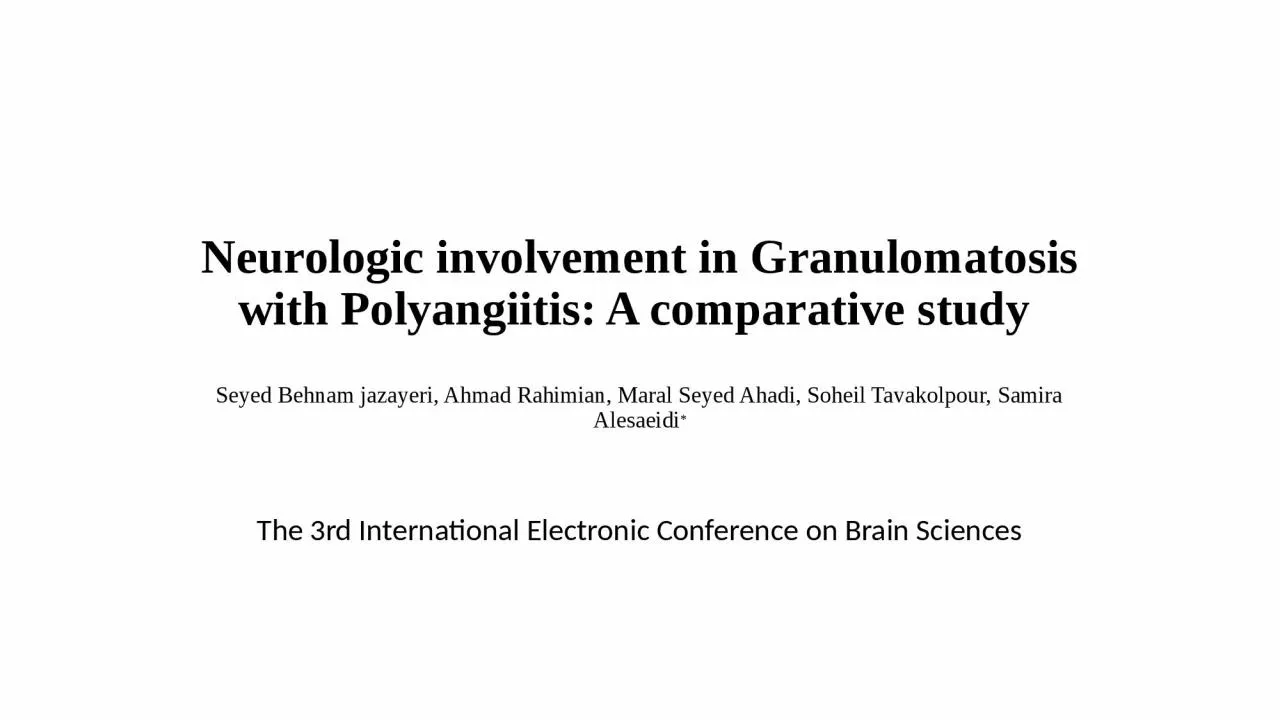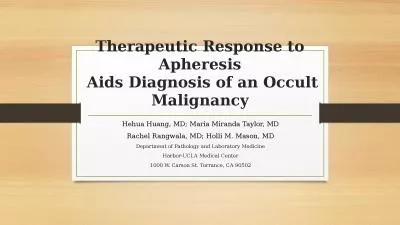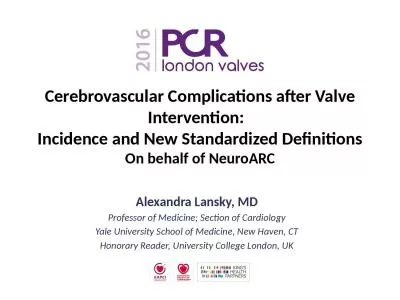PPT-Neurologic involvement in Granulomatosis with Polyangiitis: A comparative study
Author : amey | Published Date : 2023-07-27
Seyed Behnam jazayeri Ahmad Rahimian Maral Seyed Ahadi Soheil Tavakolpour Samira Alesaeidi The 3rd International Electronic Conference on Brain Sciences
Presentation Embed Code
Download Presentation
Download Presentation The PPT/PDF document "Neurologic involvement in Granulomatosis..." is the property of its rightful owner. Permission is granted to download and print the materials on this website for personal, non-commercial use only, and to display it on your personal computer provided you do not modify the materials and that you retain all copyright notices contained in the materials. By downloading content from our website, you accept the terms of this agreement.
Neurologic involvement in Granulomatosis with Polyangiitis: A comparative study: Transcript
Download Rules Of Document
"Neurologic involvement in Granulomatosis with Polyangiitis: A comparative study"The content belongs to its owner. You may download and print it for personal use, without modification, and keep all copyright notices. By downloading, you agree to these terms.
Related Documents














